#BOU2023 – Alfred Newton Lecturer and Keynotes
Rapid evolutionary and plastic responses of birds to environmental change
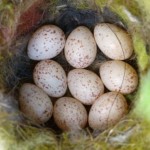
4 – 6 April 2023
Nottingham, UK & Twitter
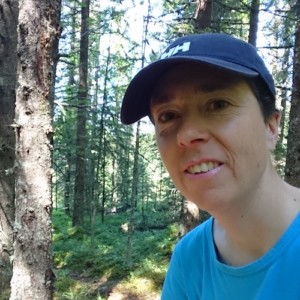
Alfred Newton Lecture
Prof Jane Reid
University of Aberdeen, UK & Norwegian University of Science and Technology, Norway
Jane’s research aims to provide integrated empirical and theoretical understanding of how ecological and evolutionary processes can combine to shape individual life-histories and drive population dynamics in nature.
Integrating seasonal movements into evolutionary ecology
Many wild populations are experiencing rapid environmental changes, including changing seasonality and increasing extreme climatic events. Now, major challenges in ornithology, and in evolutionary ecology more widely, are to predict how populations will respond to such changes over short and longer timeframes. In general, outcomes will depend on combinations of demographic variation, rapid micro-evolution and phenotypic plasticity in key environmentally sensitive traits that affect spatio-seasonal population dynamics. One key trait, exhibited by many birds and other taxa, is seasonal migration. But, seasonal migration has still scarcely been considered in projections of eco-evolutionary dynamics, and new conceptual, analytical and empirical advances are now required to make progress. In my Alfred Newton Lecture I will highlight how combinations of demography, natural selection, genetic variation and intrinsic phenotypic plasticity in expression of seasonal migration versus residence can combine to shape spatio-seasonal population dynamics in the context of dramatic environmental variation. I will illustrate these processes using multi-year full-annual-cycle data from partially migratory European Shags. I will thereby highlight how we can start to predict how eco-evolutionary dynamics involving seasonal migration will shape population responses to rapid spatio-seasonal environmental change.
Keynote presenters
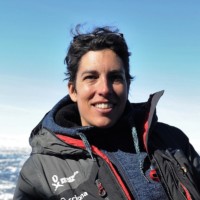
Prof Anne Charmantier
Center for Functional and Evolutionary Ecology (CEFE), France
Anne’s main research interests are focused on understanding the mechanisms involved in the evolution of adaptive traits, especially in a context of rapid anthropogenic changes.
Session: Rapid responses to urbanisation
Great Tits in the city: a tale of (mal)adaptation?
For many decades, the contribution of ornithology to the fields of Ecology and Evolution relied heavily on long-term studies conducted in pristine environments, where we were aiming to study natural selection ‘unpolluted’ by the strong anthropogenic forces affecting ecosystems. In particular, cities were avoided as their bird communities were very altered compared to natural habitats, and highly affected by the cocktail of novel and constraining conditions in urban areas. In the past decade, it has however become obvious that we need to learn more about our urban birds in order to protect them, but also that urban environments offer exciting perspectives to investigate processes of rapid adaptation. Results from a project on Great Tits Parus major along an urbanisation gradient will illustrate the potential of studies on urban local adaptation. This study revealed phenotypic divergence for a large set of avian morphological, behavioural and life history traits: e.g. birds in the city are smaller, more aggressive, faster explorers with faster breath rates, and breed earlier and have smaller clutches. These phenotypic shifts in cities could be maladaptive since they were never aligned with estimations of natural selection. By exploring the genomic footprints of selection and conducting a common garden experiment we are starting to unravel the interplay between plastic versus genetic responses to urbanisation. Understanding the mechanisms by which populations can rapidly adapt to global change is crucial to predict their viability but often requires multiple complementary approaches and will benefit from collaborative approaches such as meta-analyses in the future.

Dr Arild Husby
Uppsala University, Sweden
Arild has a deep interest in understanding the genetic basis of phenotypic plasticity, from the quantitative genetic to the molecular level.
Session: Genetic and epigenetic responses
What role do epigenetic mechanisms play in avian adaptation? A case study of seasonal timing of reproduction
Phenologial traits, such as seasonal timing of reproduction, are among the traits that have responded most rapidly to climate change. It is currently believed that these shifts in seasonal timing are a result of phenotypic plasticity, but we do not yet understand what genetic mechanisms are involved. Some recent works have examined the role epigenetic mechanisms, in particular DNA methylation, might have in seasonal reproduction through their role in gene regulation of key genes in the reproductive cascade. These findings suggests that seasonal changes in DNA methylation patterns can act to regulate expression and thus onset of seasonal timing, although the generality of this finding is still unclear. I this talk I will present an overview of what we currently know about the role of epigenetic mechanism in avian seasonal reproduction and some of the challenges we face to obtain robust functional evidence of the role of epigenetic mechanisms in seasonal timing of reproduction.

Dr Caroline Isaksson
Department of Biology, Lund University, Sweden
Caroline’s research focus is to understand the impacts of urbanisation on birds using a broad repertoire of approaches and techniques to disentangle the effects and responses caused by different urban factors.
Session: Responses to environmental pollution
The cocktail of urban pollutants and its impacts on birds
Urban habitats and landscapes are markedly different from non-urban “natural” habitats. The major difference is the transformation of the land, from natural green areas to anthropogenic structures and impervious surfaces. In addition, to the fragmented landscapes, urban-dwelling birds are exposed to many novel, sometimes beneficial, but most often challenging conditions. These conditions include for example increased exposure to different kinds of pollutants such as chemical pollution, artificial light at night (ALAN), and noise. These pollutants co-occur in the city and its impact can be difficult to disentangle using field studies of urban and non-urban bird populations. To explore this in more detail we have performed a number of experimental studies of these three anthropogenic pollutants to understand the behavioural, physiological and genetic perturbations in relation to single and multipollutant exposures. These controlled perturbations using Zebra Finches Taeniopygia guttata, will be compared and discussed in relation to physiological and genetic changes found in wild urban and non-urban populations of Great Tits Parus major to bring some light into the evolutionary responses to pollution.
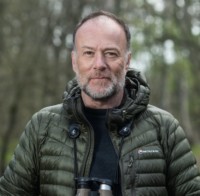
Prof Ben Sheldon FRS
Edward Grey Institute, University of Oxford, UK
Ben has long been interested in questions at the interface of ecology, evolution and behaviour, and has found long-term population studies of birds to offer particularly rich opportunities for this kind of work.
Session: Phenological changes
Evolution of phenology in a spatio-temporal context
Phenology has become something of a touch-stone for understanding effects and consequences of anthropogenic climate change. However, understanding the evolutionary and demographic consequences of variation in phenology requires that we think about this at the appropriate spatial and temporal scale. In this talk I will summarise work that has addressed the scale-dependence of selection on phenology, and of changes in phenology over time, as exemplified by breeding time in birds, based on analyses at both the scale of individual birds and across populations.
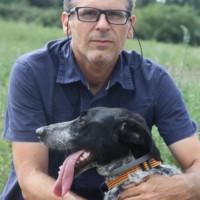
Dr Daniel Sol
Research at the Centre of Ecological Research and Applied Forestries (CREAF), Spain
Daniel’s lab seeks to understand how animals respond to changes and what are the consequences for biodiversity. To this purpose, we combine theoretical models, experiments and comparatives approaches.
Session: Behavioural and morphological changes in novel environments
Behaviour, life history and persistence in novel environments
Novel environments pose many challenges to animals for population persistence because they generate adaptive mismatches and pose difficulties for adaptative rescue. Not surprisingly, most species have difficulties to colonize novel environments. Yet some species seem to be very successful in such environments. In this talk, I will discuss theoretical and empirical evidence for the importance of behavioral responses to persist, proliferate and evolve in novel environments. My thesis is that these responses are part of a slow-lived strategy to cope with environmental changes. Drawing on studies in birds, I will suggest that integrating behavior into life history theory does not only improve our understanding of the invasion process, but it also has important evolutionary implications.
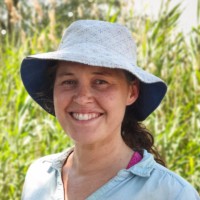
Dr Rose Thorogood
University of Helsinki, Finland
Rose’s research group combines approaches from field biology to genomics. They investigate how individuals learn from each other, and how this affects their evolution and resilience to environmental change.
Session: Species interactions and community-level responses
Does social information use help or hinder Reed Warblers vs. Cuckoos coevolving in a geographic mosaic?
The Geographic mosaic theory of coevolution (Thompson, 2005) is often invoked in plants and pathogens to explain how hosts and parasites persist across ecological and evolutionary time without driving each other to extinction. The Common Cuckoo and its hosts, like the Reed Warbler, were a putative example when the theory was presented. It is therefore surprising that we still have no rigorous tests of whether it explains the geographic patterns we see in their behaviour. This is increasingly important as habitat availability and the populations of hosts and cuckoos continue to change. At the same time, it is becoming clear that the behaviour of others in the local social environment can have important effects on both ecological and evolutionary dynamics, meaning that local densities and identities may need to be considered when investigating range wide patterns. Here I’ll present recent work from both classic and new study populations representing the core and range edges of the Reed Warbler to address (i) how their social environment changes across a mosaic of parasitism risk in Europe, (ii) whether this affects their ability to mount defences after over 100 years in allopatry with Cuckoos, and (iii) what this might mean for the future of Cuckoos vs. Reed Warblers.
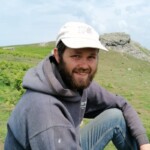
Dr Joe Wynn
Institute of Avian Research, Germany & University of Oxford, UK
Joe did his undergraduate degree at Hertford College, Oxford (2014-17) before moving to Linacre College, Oxford for a D.Phil. (2017-21) studying the mechanism and development of animal navigation with Tim Guilford. Following this he moved to the Institut für Vogelforschung in Wilhelmshaven, Germany for a post-doctoral position under the supervision of Miriam Liedvogel and Sandra Bouhwuis (2021-present).
Session: Movement and space use
How do migratory mechanisms influence responses to climate changes?
Understanding how populations of migratory birds respond to a changing climate not only represents a fundamental question in modern bioscience, but is also an increasingly pressing issue in species conservation. The extent to which individual migrants can persist as the climate varies is necessarily a function of their behavioural plasticity, which in turn is partly contingent on the mechanisms by which they orient and navigate. Conversely, the probability of a novel migratory route evolving in response to anthropic environmental alterations must be linked to a) the probability of a given novel migratory routes occurring and b) the relative fitness payoffs associated with it. A mechanistic understanding of how migratory routes are inherited, refined and executed is, therefore, of interest. Here, using historic ringing records, biologging technology and remotely-sensed environmental data, I present a series of studies aimed at elucidating the relationship between navigational mechanism and ecological change. In doing so I will draw on examples from across the avian phylogenetic tree, and in turn hope to highlight the importance of a mechanistic understanding when considering ultimate questions of selection and evolution.
Scientific Programme Committee
Amanda Trask | Zoological Society of London, UK & BOU Meetings Committee (Chair)
Ferran Sayol | University College London, UK
Emily Simmonds | Norwegian University of Science and Technology, Norway
Jelmer Samplonius | University of Edinburgh, UK
Michela Corsini | University of Warsaw, Poland
María Moirón | Institute of Avian Research, Germany
Image credits
Top right: Great Tit nest with eggs | nottsexminer CC BY SA 2.0 Wikimedia Commons Wikimedia Commons
Middle: Siberian Stonechat | Mprasannak CC BY SA 4.0 Wikimedia Commons


